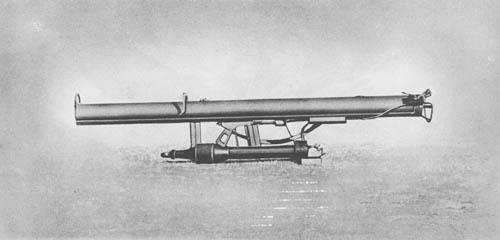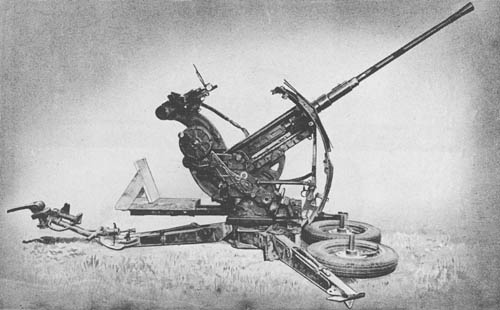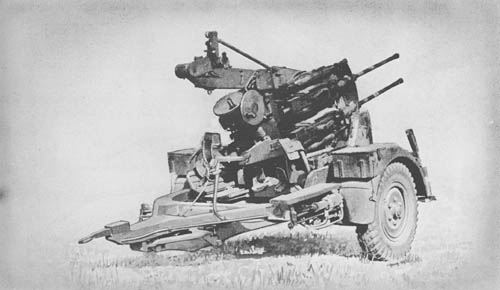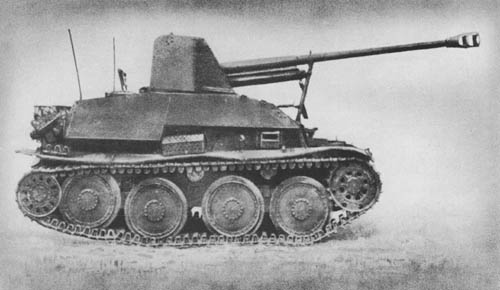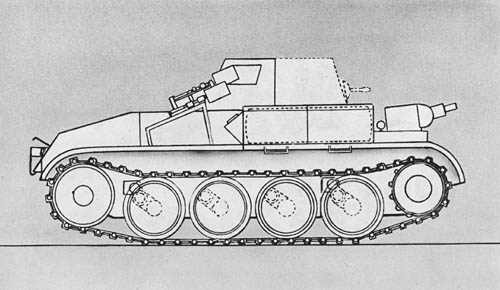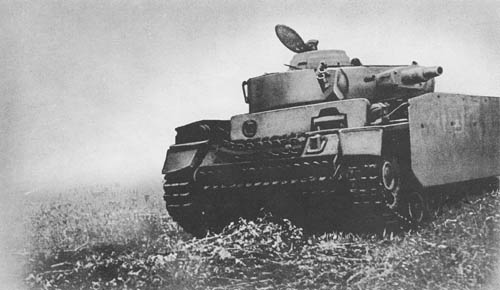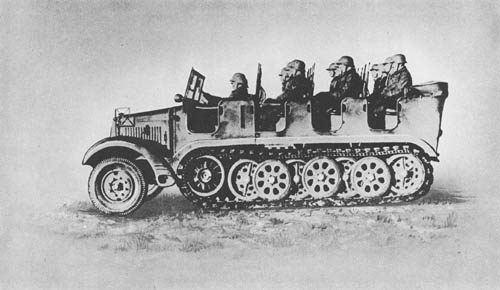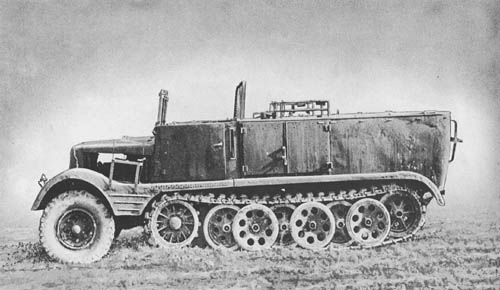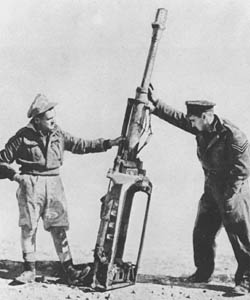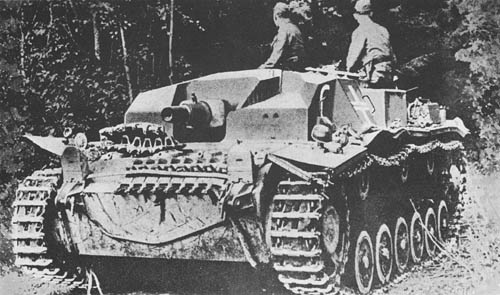
The Sturmgeschütz is an assault weapon. Unlike the two other classes of self-propelled guns, antitank and artillery, which consist merely of guns placed in the hull of a tank with shields erected around the front and sides thereof, the assault gun is built into the hull and is consequently nearer the ground and has a much more solid superstructure built round the gun. The original Sturmgeschütz consisted of the turretless chassis of a Pz. Kpfw. III tank, upon which was mounted the Stu. G. 7.5 cm K., a short-barreled (69.5 inch) piece found in the first models of the Pz. Kpfw. IV. Since the power plant and other mechanical components of the chassis of the Sturmgeschütz are identical to those of the Pz. Kpfw. III tank, and their weights are approximately the same, the performance data of the two are comparable.
The turret of the original tank has been removed and replaced by a squat superstructure, reducing the height of the vehicle from 8 feet, 3 inches as a tank to 6 feet, 5 inches as an assault weapon. The gun compartment is roofed over, but there is no rotating turret. The fighting compartment is armored as follows: front 53 mm, sides 43 mm, top 11 mm.
The gun, which is mounted low in the hull and fires forward, is identical to the 7.5 cm Kpfw. K. short tank gun, originally the main armament of the Pz. Kpfw. IV tank. It is primarily a close support weapon, the ammunition scale comprising only 25% A.P. against 10% smoke and 65% H.E.; its armor-piercing performance is relatively poor. Its muzzle velocity and maximum range firing H.E. shell is 1,378 f.s. and 6,758 yards, respectively. The penetration of A.P.C.B.C. shell against homogeneous armor is reported as follows: 500 yards, 1.81 inches at 30° obliquity, 2.16 inches normal—1000 yards, 1.61 inches at 30°, 1.97 inches normal—1,200 yards, 1.57 inches at 30°, 1.89 inches normal.
SPECIFICATIONS
| Weight | 21 tons | |
| Length | 17 ft., 9 ins. | |
| Width | 9 ft., 7 ins. | |
| Height | 6 ft., 5 ins. | |
| Ground clearance | 14 ins. | |
| Tread centers | 8 ft., 2 1/2 ins. | |
| Ground contact | 9 ft., 4 1/2 ins. | |
| Width of track | 15 ins. | |
| Pitch of track | 4 3/4 ins. | |
| Track links | 90 | |
| Fording depth | 3 ft. | |
| Theoretical radius of action | ||
| Roads | 100 miles | |
| Cross-country | 60 miles | |
| Speed | ||
| Roads | 28 m.p.h. | |
| Cross-country | 15 m.p.h. | |
| Armor | ||
| Front plate | 50 mm | |
| Sides | 30 mm | |
| Armament | 7.5 cm Kw. K. | |
| Ammunition | 84 rds. | |
| Engine | Maybach V-12, HL 120 TRM, 320 hp. | |
| Transmission | 6 speeds forward, 1 reverse | |
| Steering | Epicyclic, clutch brake | |
| Crew | 4 |
German: p. 26
